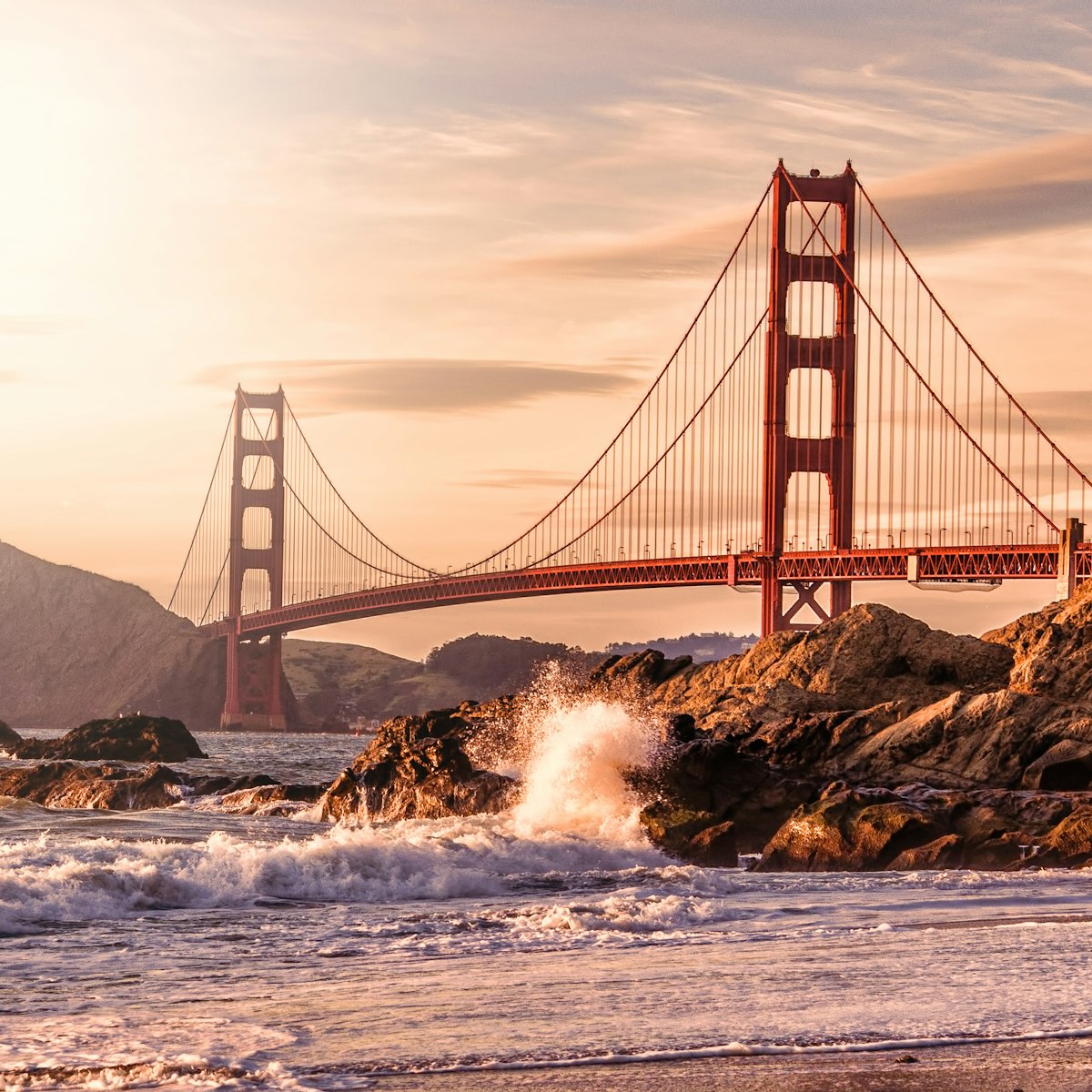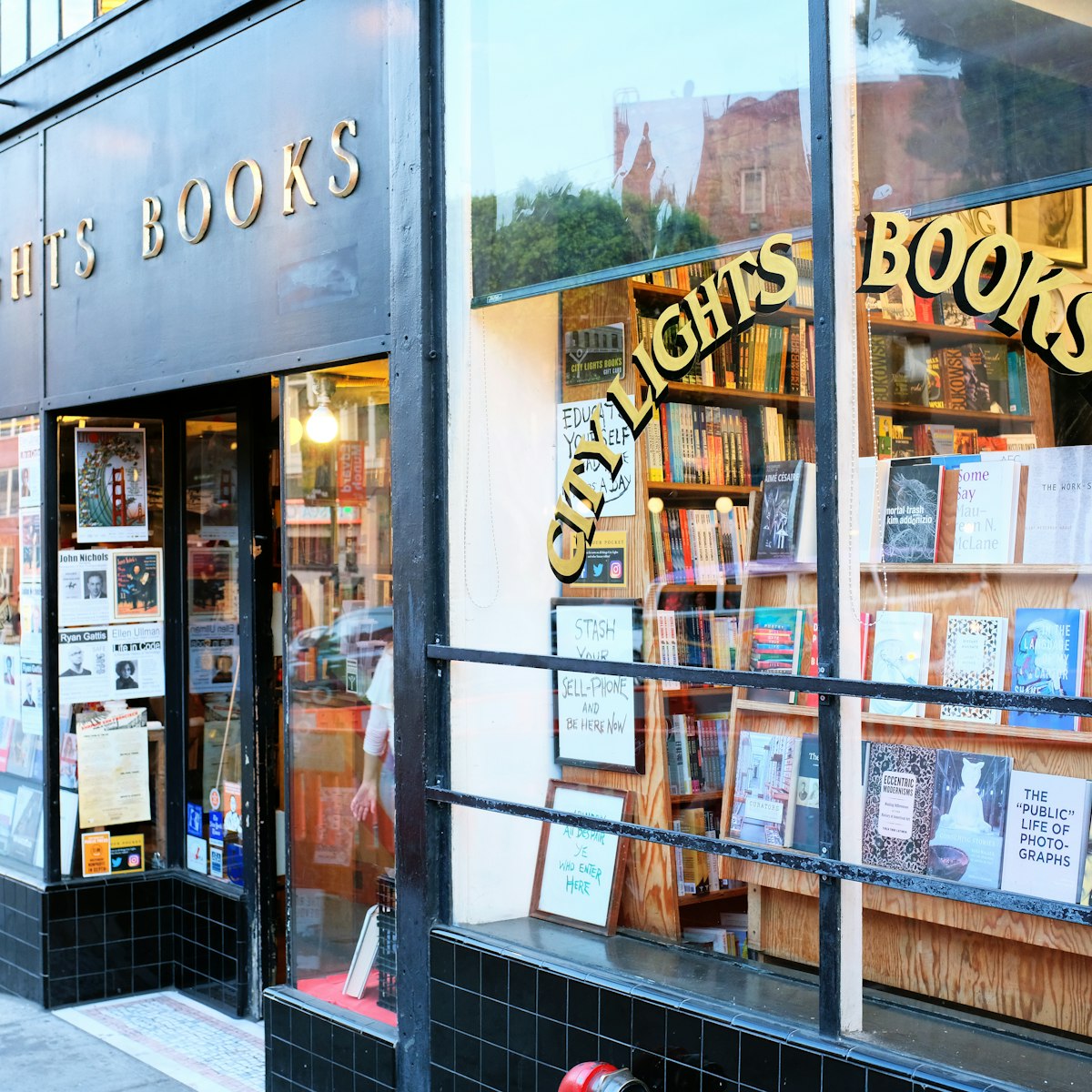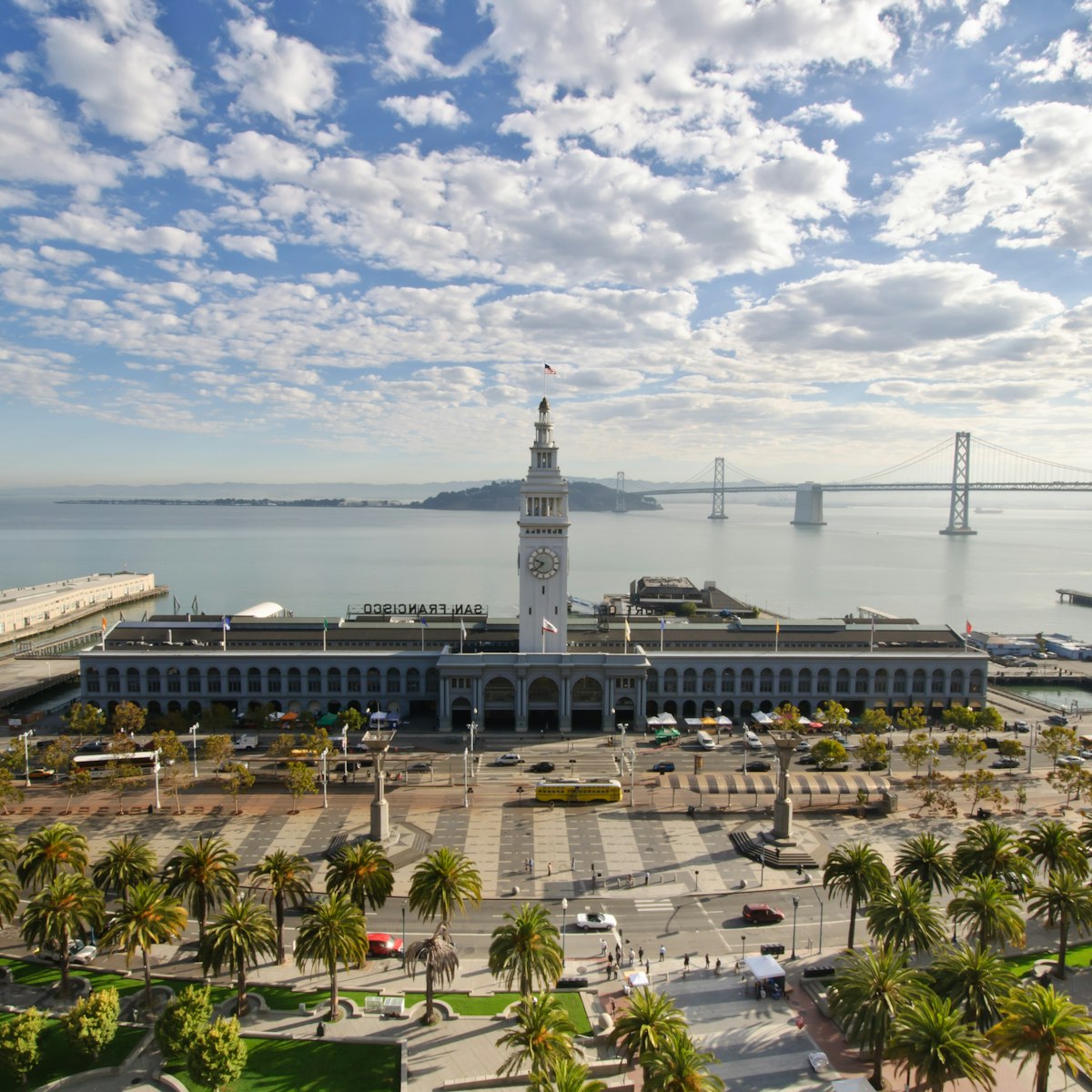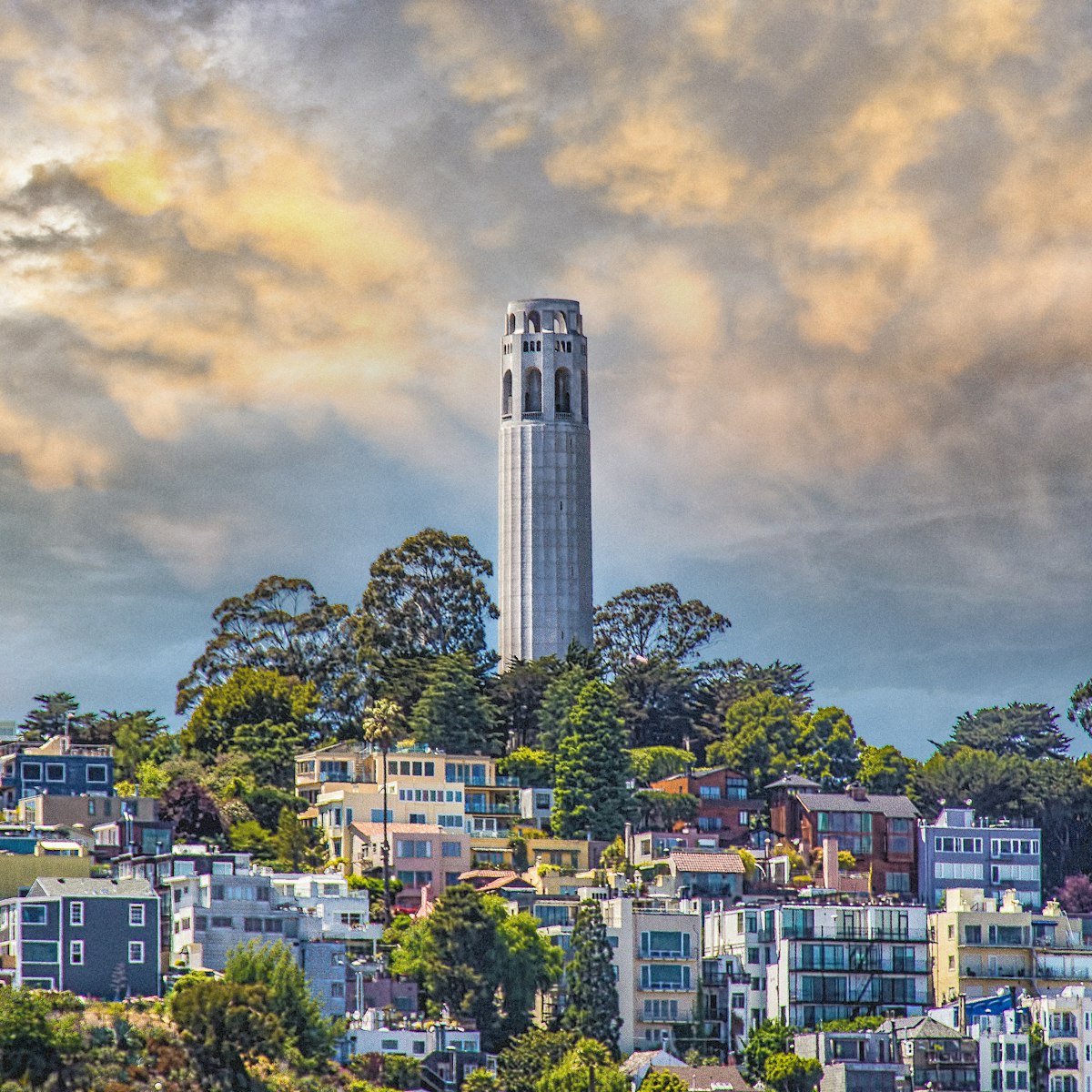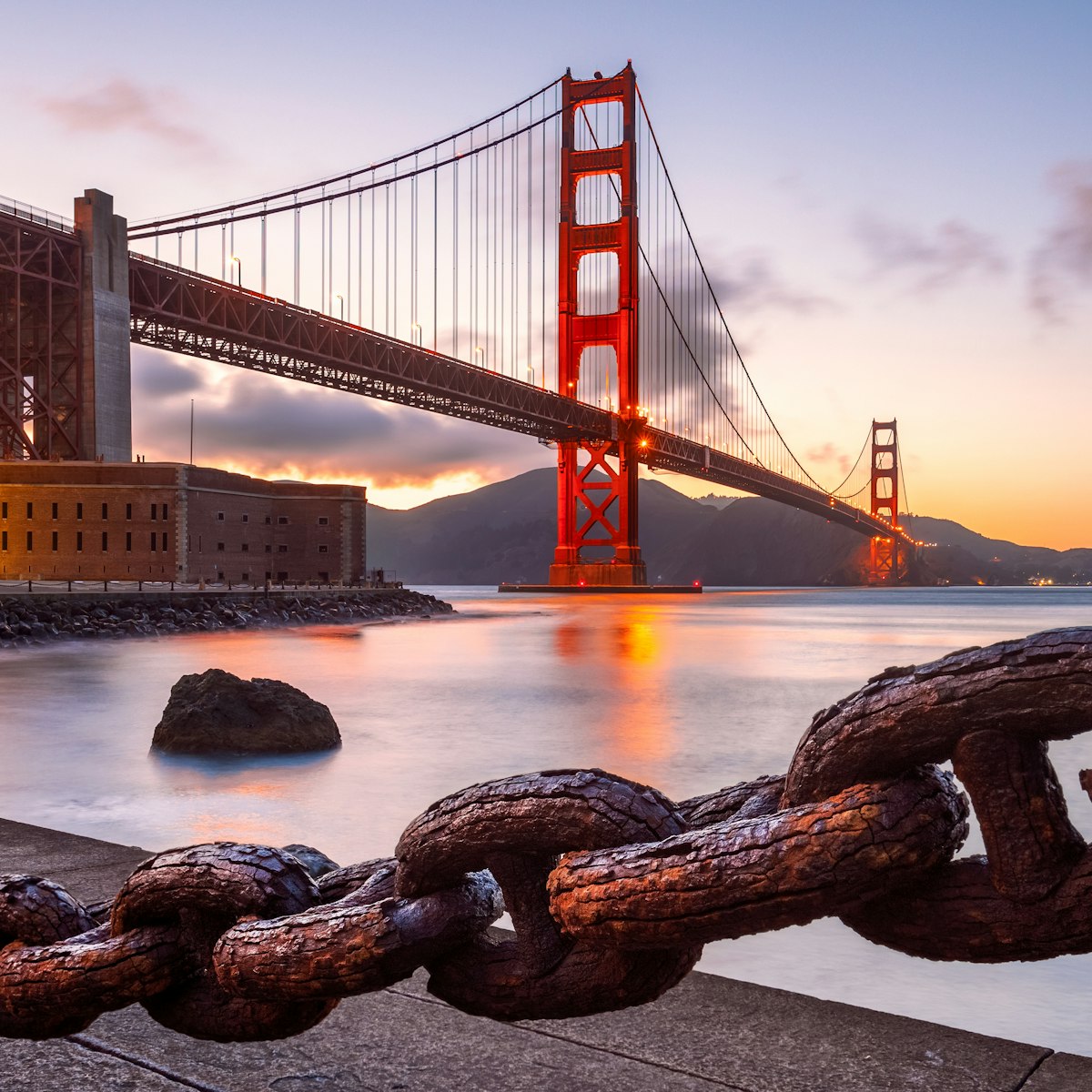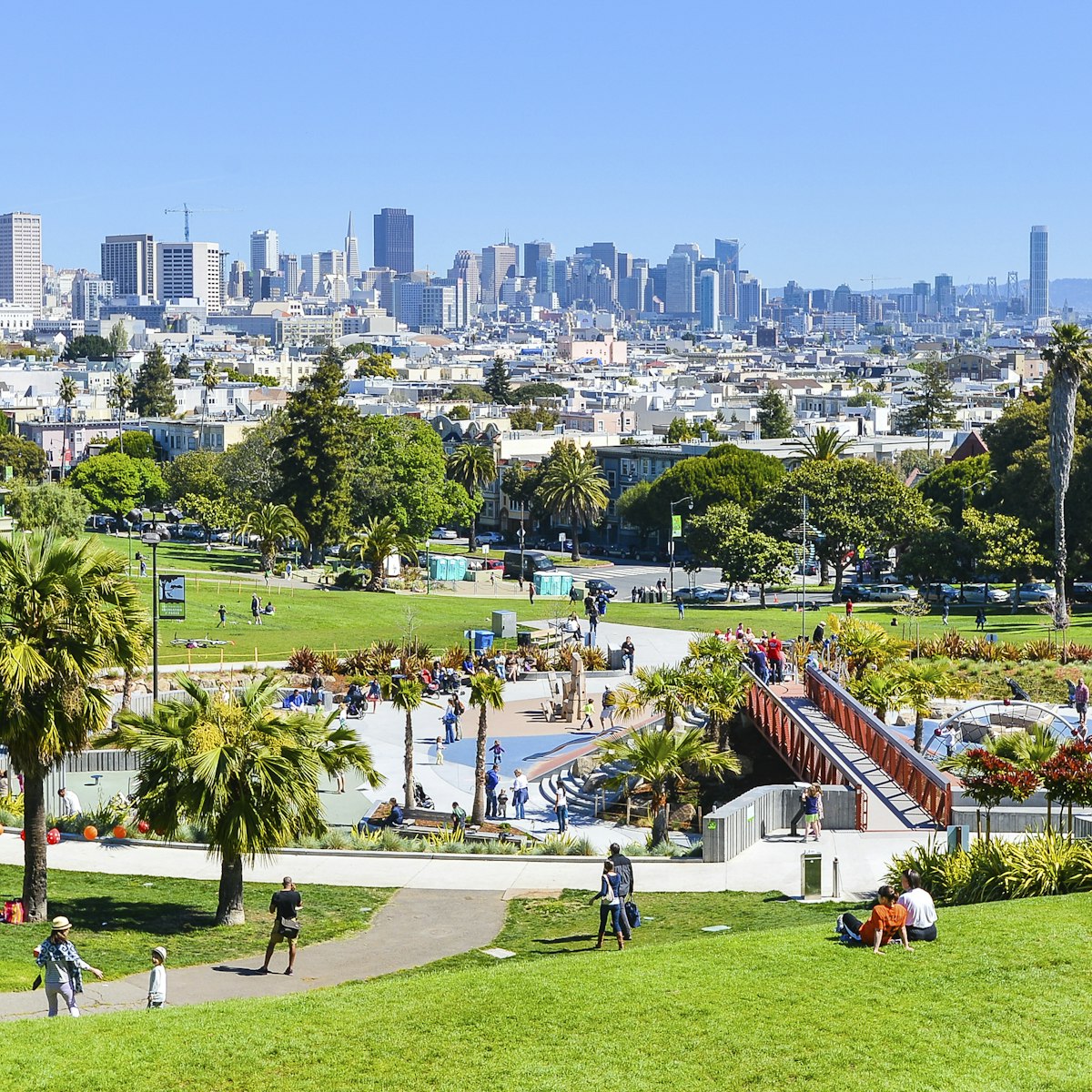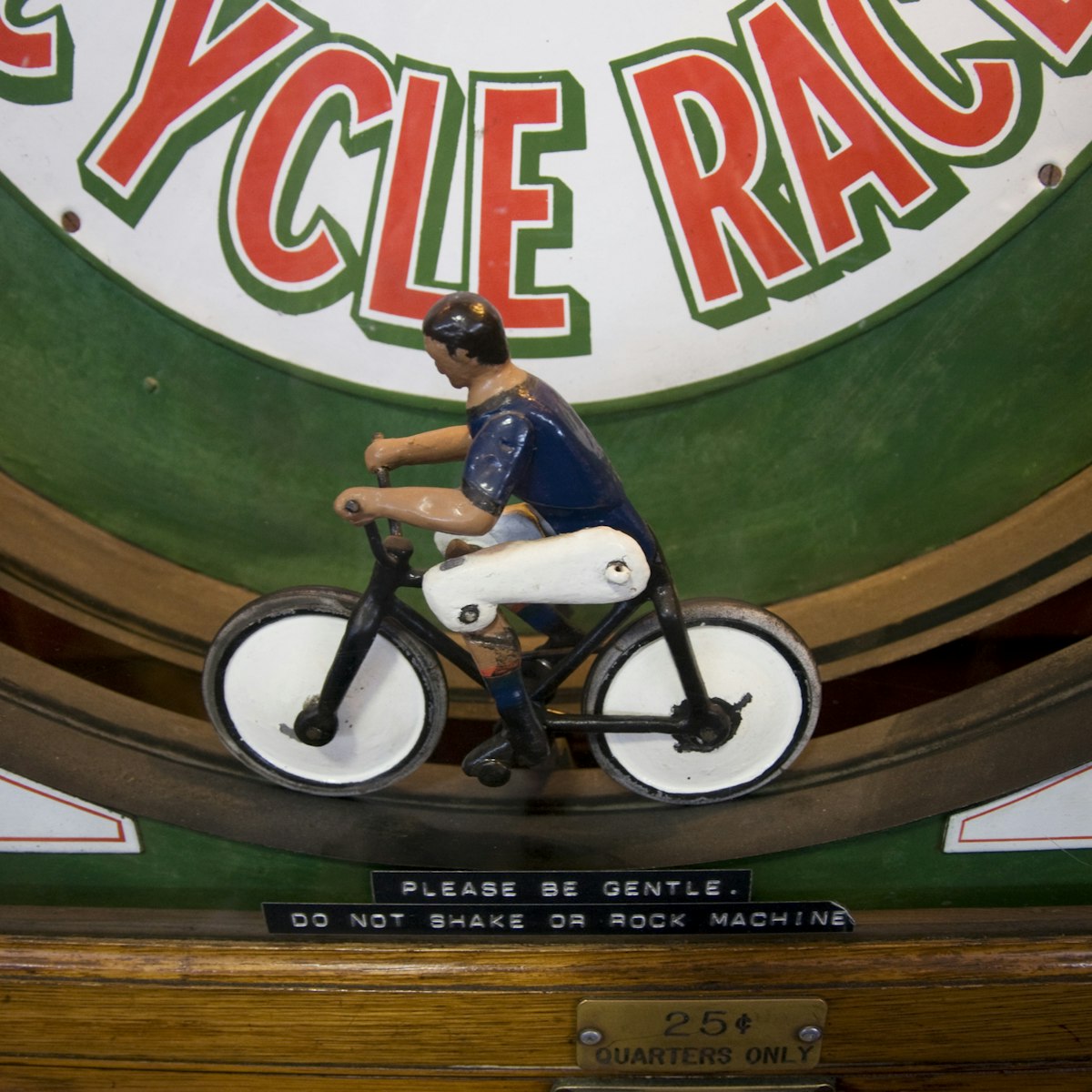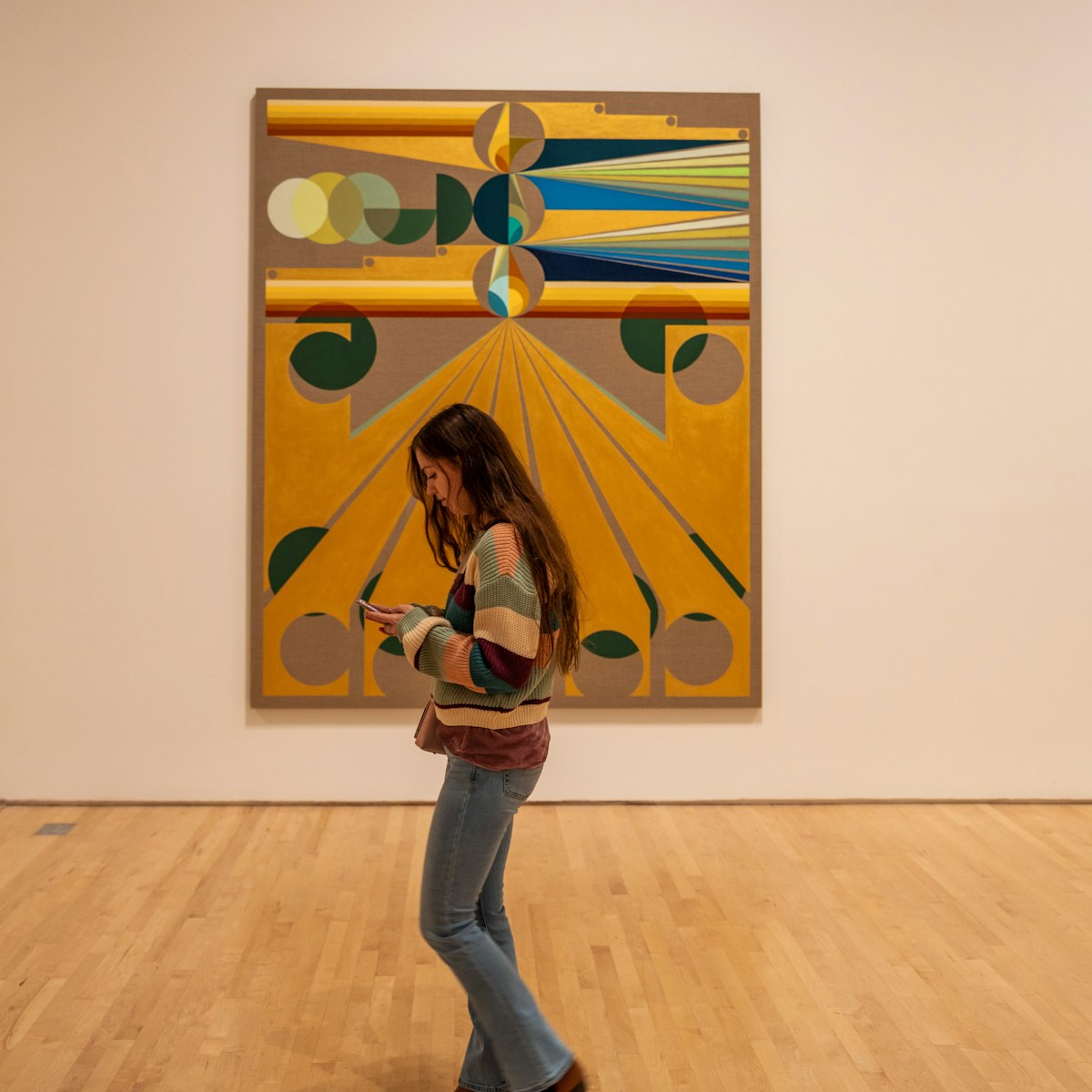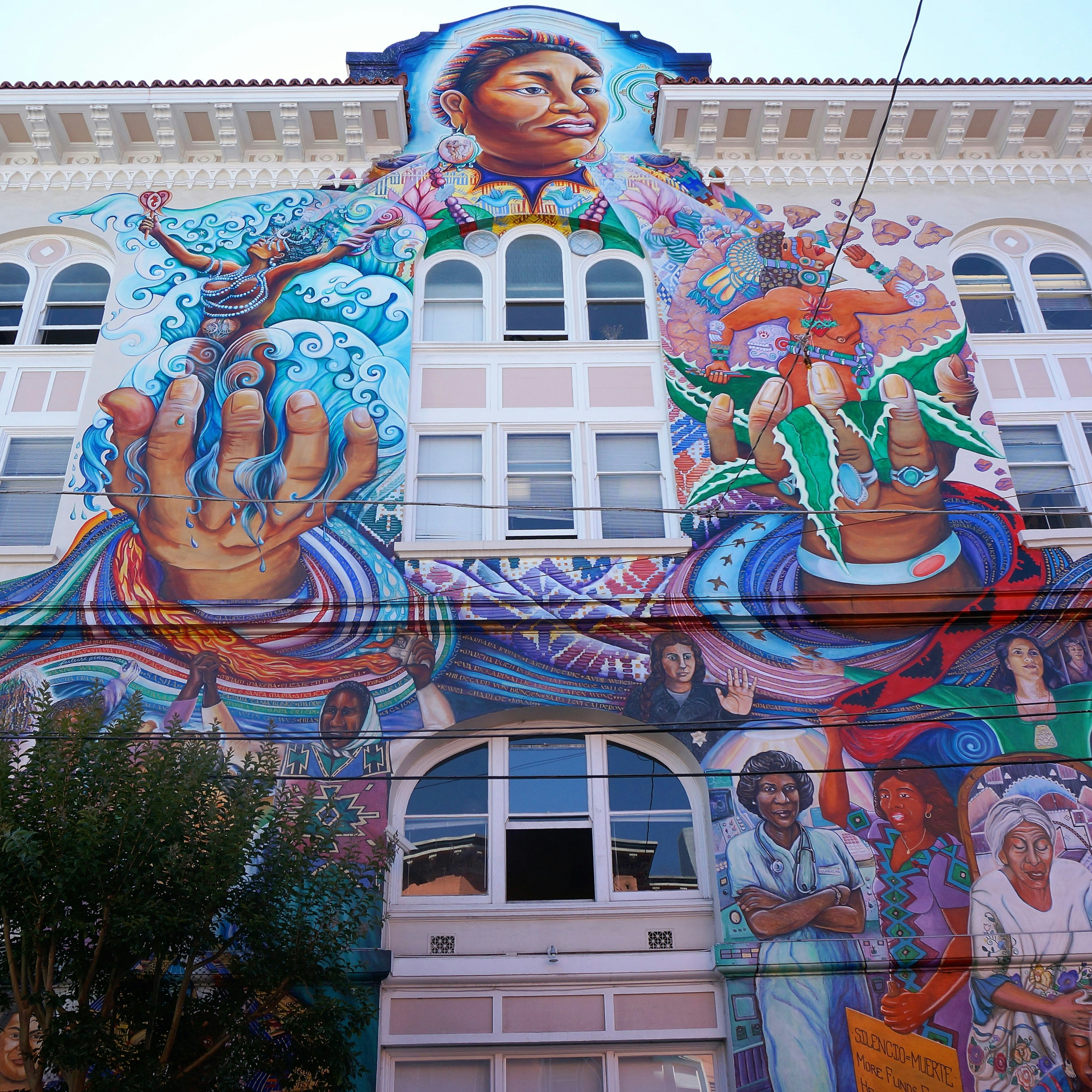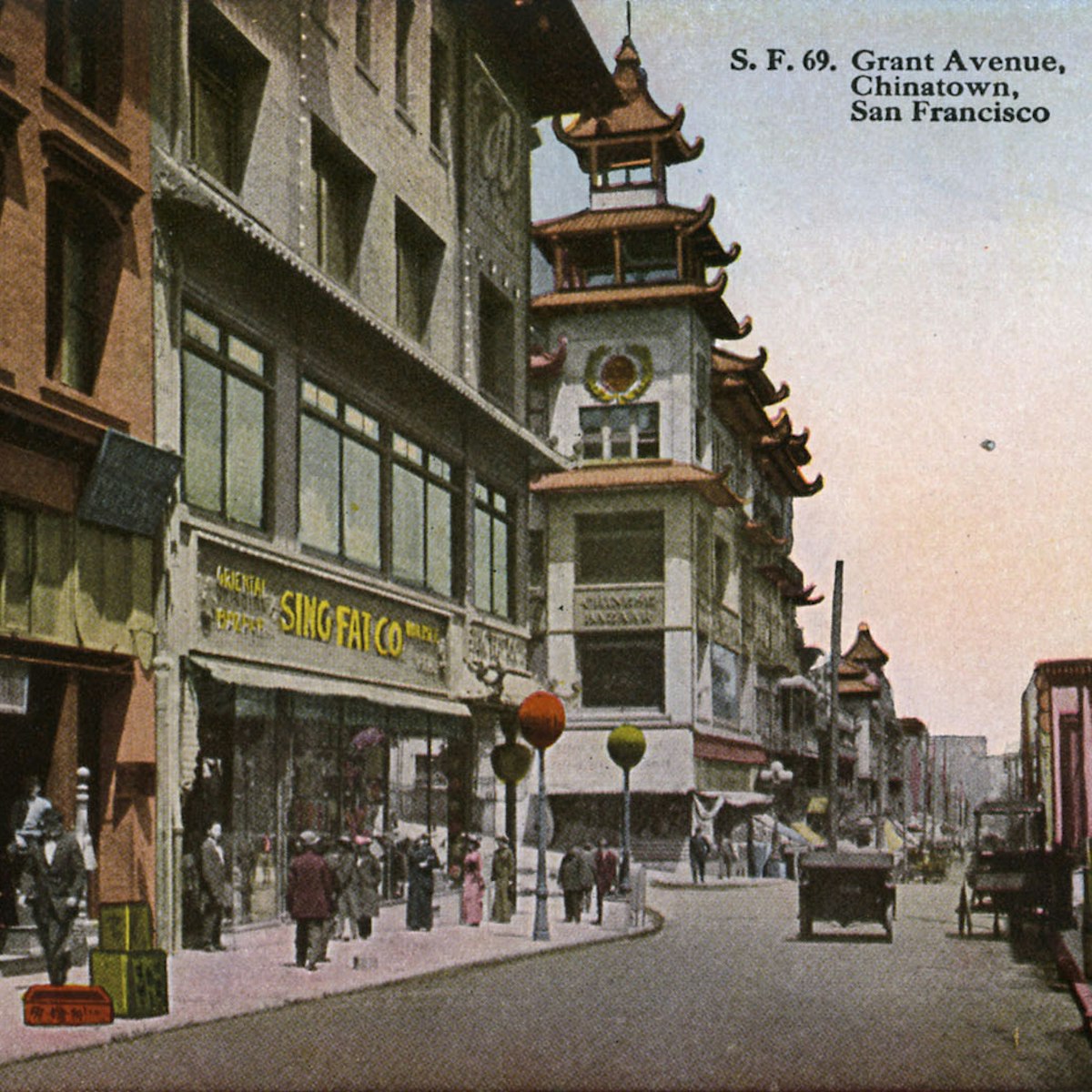
Picture what it was like to be Chinese in America during the gold rush, transcontinental railroad construction, and Beat heyday in this 1932 landmark, originally built as Chinatown's YWCA. CHSA historians unearth fascinating artifacts: 1920s silk qipao dresses, WWII Chinatown nightclub posters, and Frank Wong's Chinatown miniatures.
Exhibits share personal insights and historical perspectives on Chinese American historical milestones – including the Chinese Exclusion Act, which officially shut out Chinese immigrants from US citizenship and civil rights from 1882 to 1943, the Cold War, and the Civil Rights Movement.

Visitors watch the "Chinese American: Exclusion/Inclusion" exhibition at the Chinese Historical Society of America Museum © Xin Xinhua News Agency via Getty Ima
What to see at the Chinese Historical Society of America
The CHSA has a rich permanent collection that includes records on such diverse topics as the history of Chinese railroad workers, the portrayal of Chinese Americans in 19th and 20th century pop culture, the role of Chinese Americans in World War II, and more local fare like an exhibit on the stereotype-smashing 1940s Kublai Khan nightclub.
One of the especial treasures at the CHSA are Frank Wong's beloved miniatures, which portray scenes of Chinatown with the same care the artist gave to his work as a set designer on productions like Magnum PI.
Past exhibits have explored fashion, genealogy, the feminist movement for Chinese American women, and the slow, hard-won expansion of the Chinese American community in the Outer Sunset District of San Francisco.

A banner on Grant Street, San Francisco, welcomes visitors to Chinatown in the 1950s © Orlando /Three Lions/Getty Images
When to visit
The CHSA is open at 965 Clay Street Wednesday-Sunday 11AM - 4PM. Admission is $15 for adults, $10 for seniors 62 and over as well as students grade 8 through undergraduate, and free for elementary and middle school students with an adult.
Active military and their families receive free admission between Memorial and Labor Day. California library card holders can also get free admission.
Tours are offered every 1st and 3rd Saturday of the month, free with admission, and start at 11:15AM.
You can reach the CHSA by bus or cable car at the Clay and Powell stop, or at Stockton between Sacramento and Clay. Parking is available at Portsmouth Square, or at the Good Luck Parking Garage half a mile away at 735 Vallejo if you don't mind a stroll through Chinatown – it'll take you past the Golden Gate Fortune Cookie Factory.

The first Chinese American telephone operator in Chinatown works at the Chinese Telephone Exchange in San Francisco © Photo by Library of Congress/Corbis/VCG via Getty Images
The Chinese Historical Society of America founding
It was in the midst of the Civil Rights Movement that the Chinese Historical Society of America was founded to give voice to Chinese Americans nationwide whose experience in the United States had largely been overlooked by mainstream scholarship.
When the CHSA started its work, the 1965 immigration reform law that would allow a new generation of Asian immigrants into the United States was still two years off. There were just 250,000 Chinese Americans in the whole United States, and San Francisco's Chinatown was still a decade away from the housing reform movement that would give young leaders like Rose Pak, Ed Lee, and others a voice in city politics.
Still, there was a lot of history to sift through, reaching back to the days of the tong street gangs that ruled during Prohibition and into records from the family associations lining Waverly Place that welcomed newly emigrated families to Chinatown and community hubs like the Tin How Temple.

The blended architectural styles seen throughout San Francisco's Chinatown emerged after the 1906 earthquake, helping cement the neighborhood as a landmark ©photo.ua/Shutterstock
The former Chinatown YWCA
Even the graceful clinker-brick, green-tile-roofed landmark building in which the CHSA eventually settled has a rich history to explore. Designed by trailblazing architect Julia Morgan (chief architect of Hearst Castle), the former YWCA incorporated Chinese architectural motifs into a sturdy, fireproof building – an example of the uniquely American architectural style that evolved out of the rubble of San Francisco's Chinatown after the 1906 earthquake and helped make the district a tourist attraction for decades to come.
 Publish for free
Publish for free

 zzdtravel
zzdtravel







